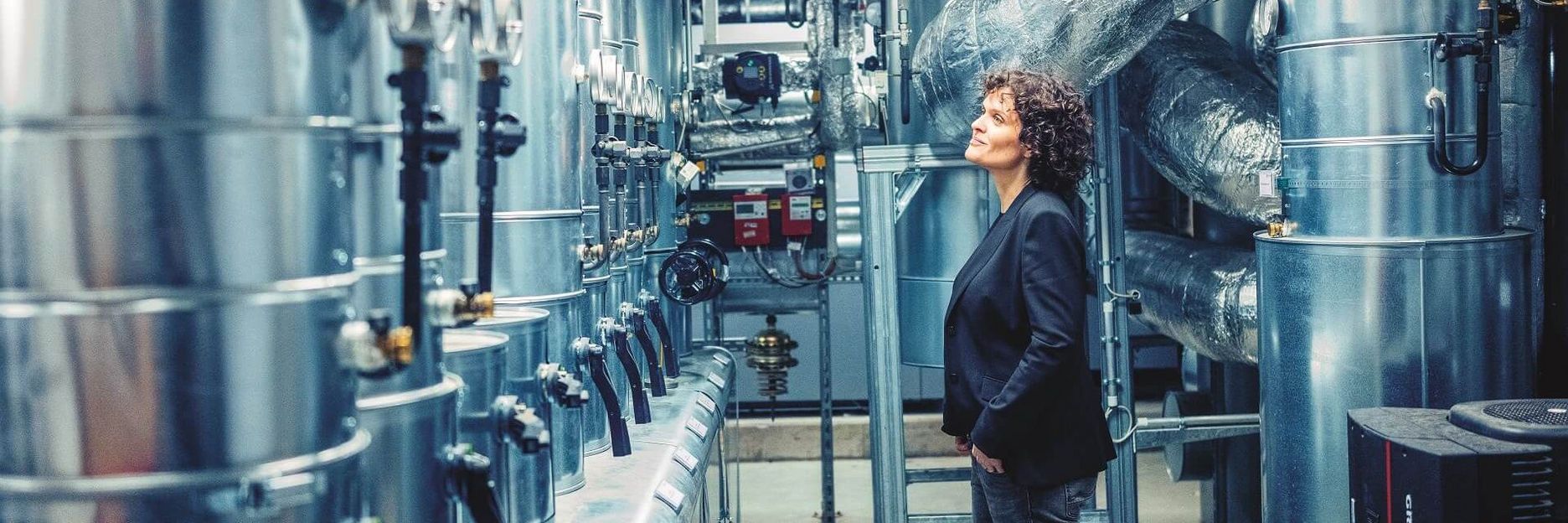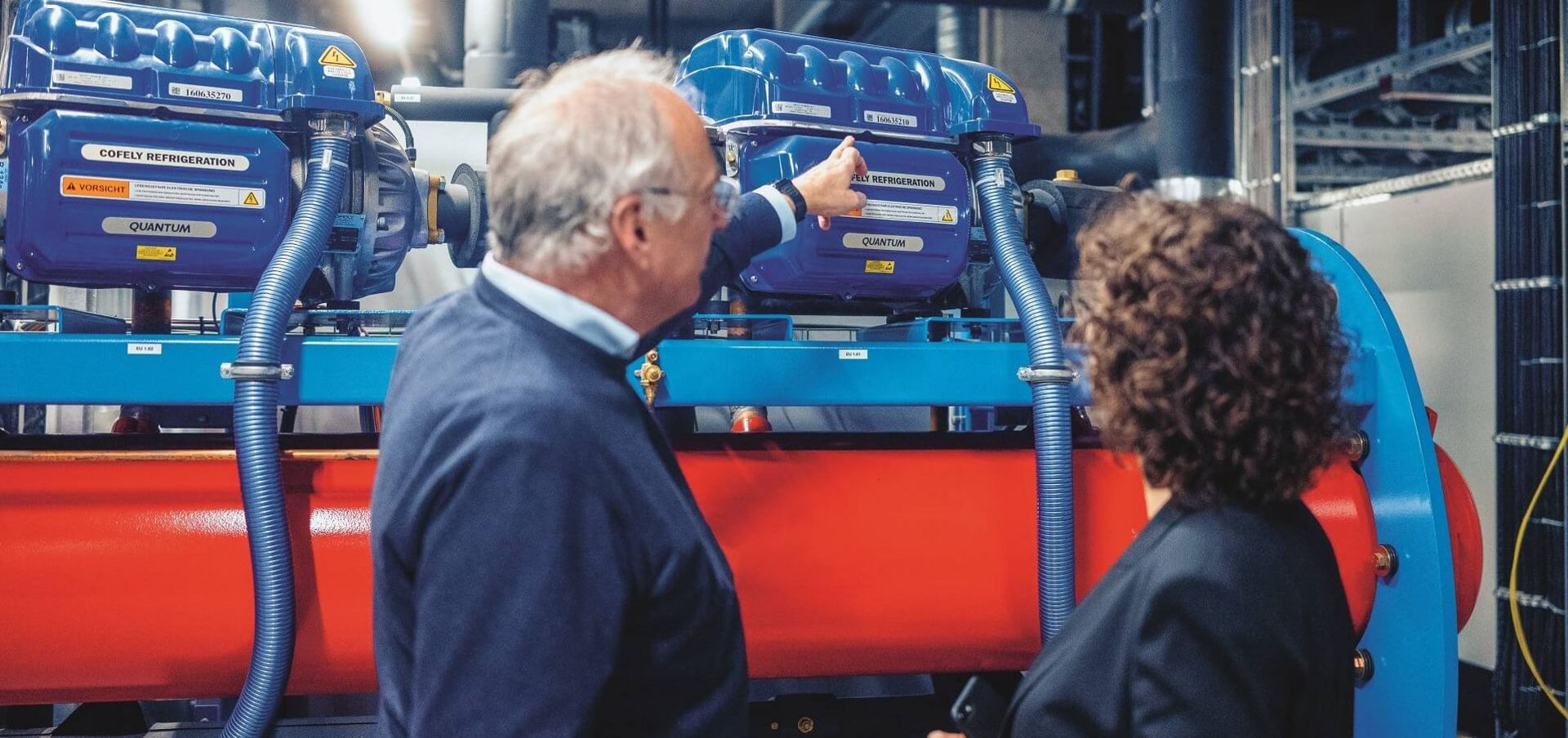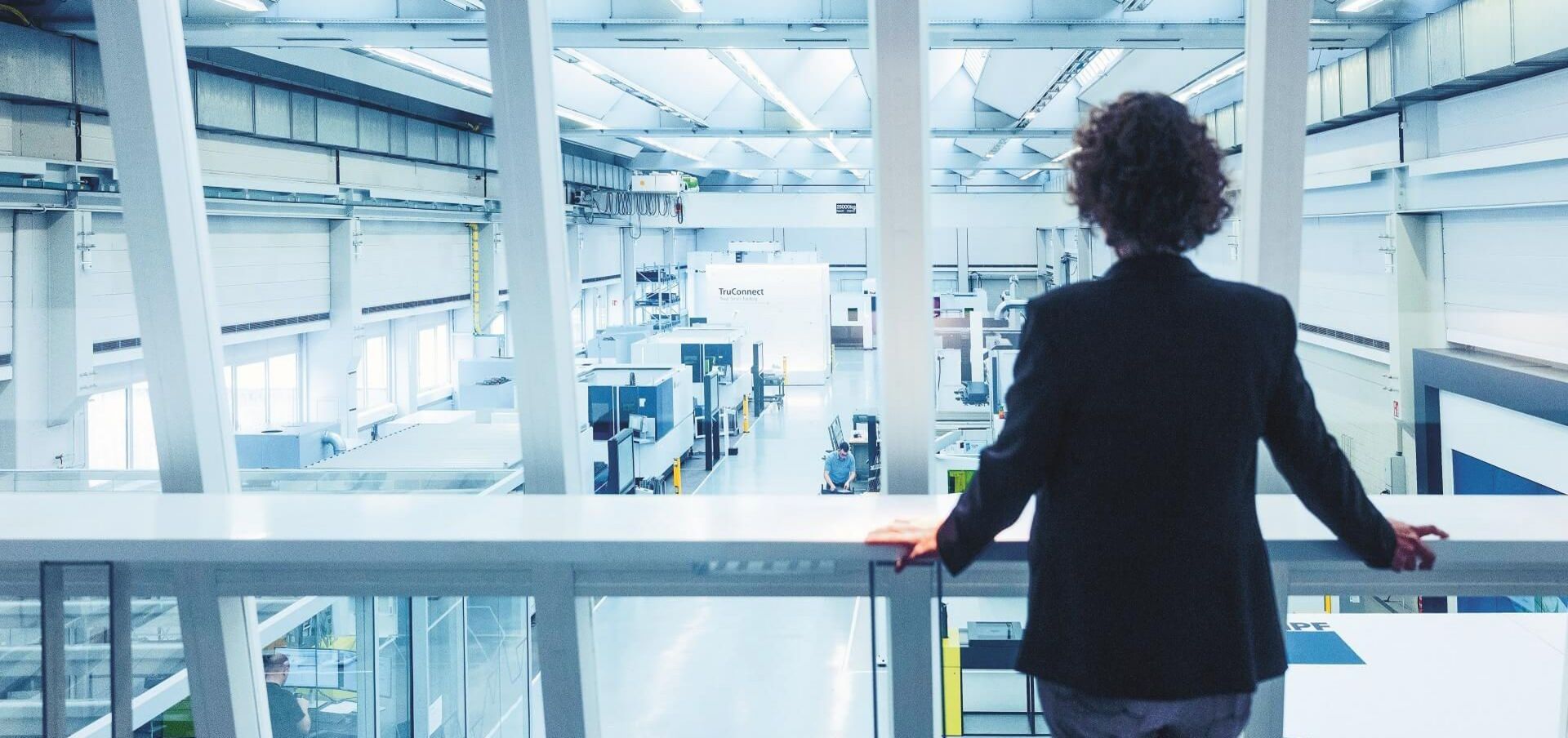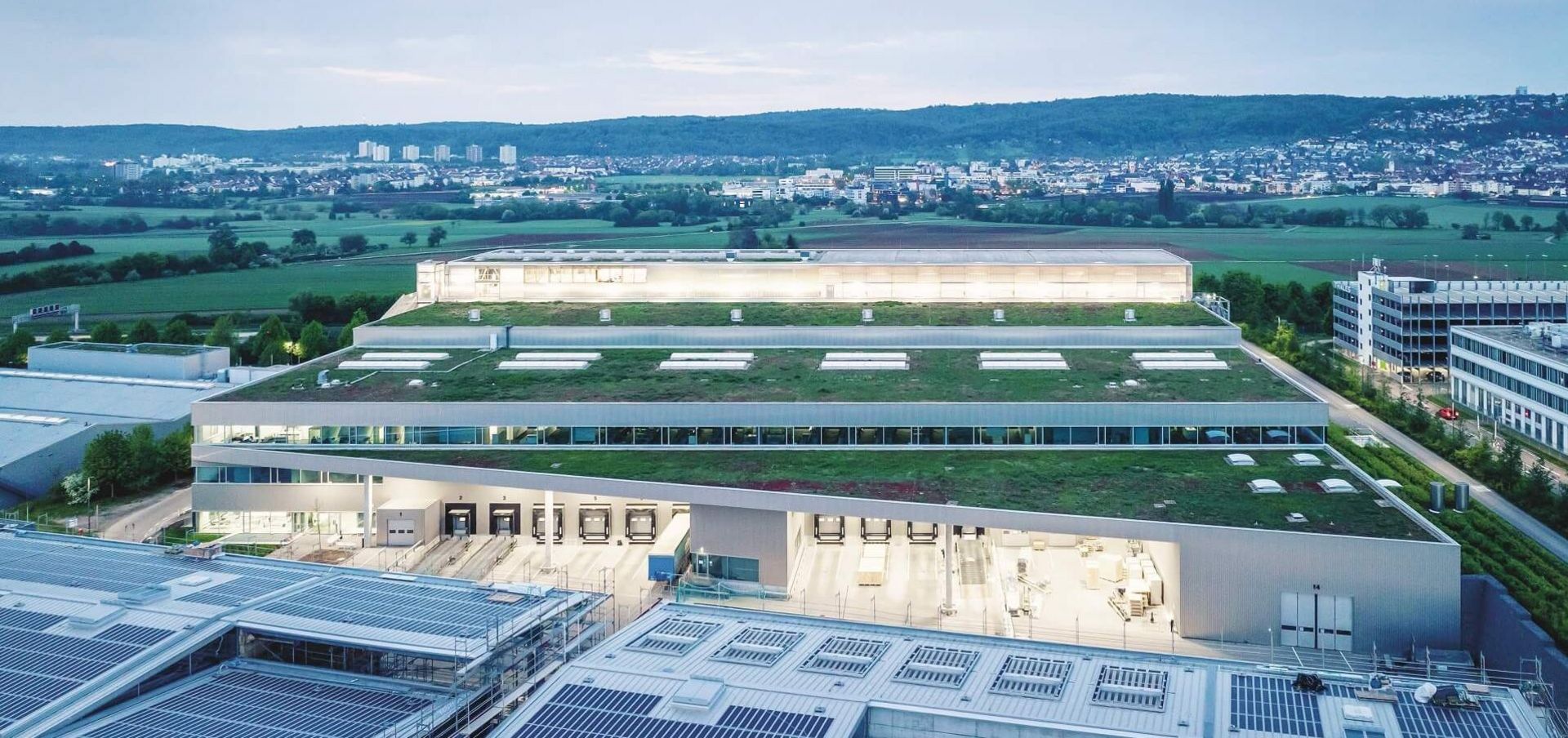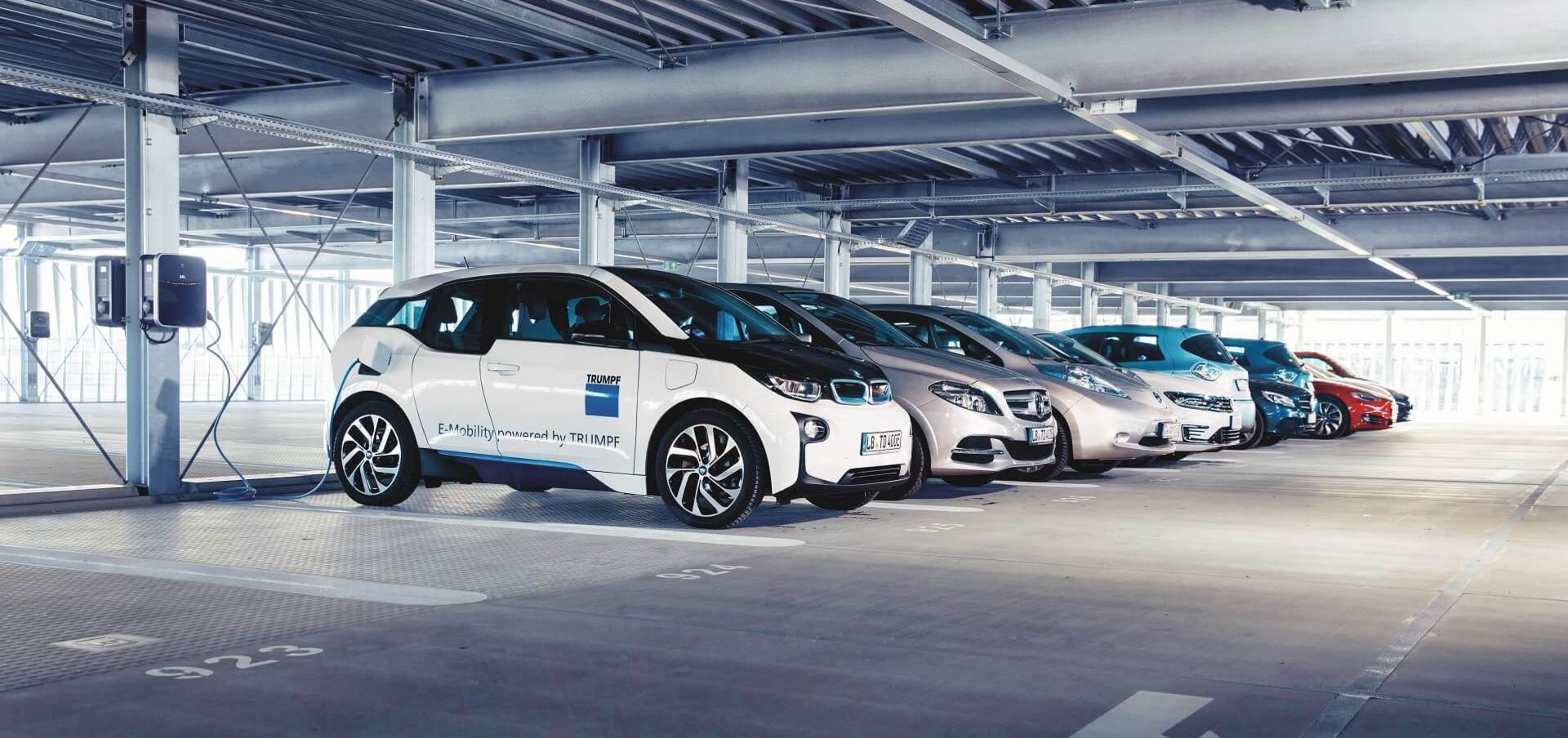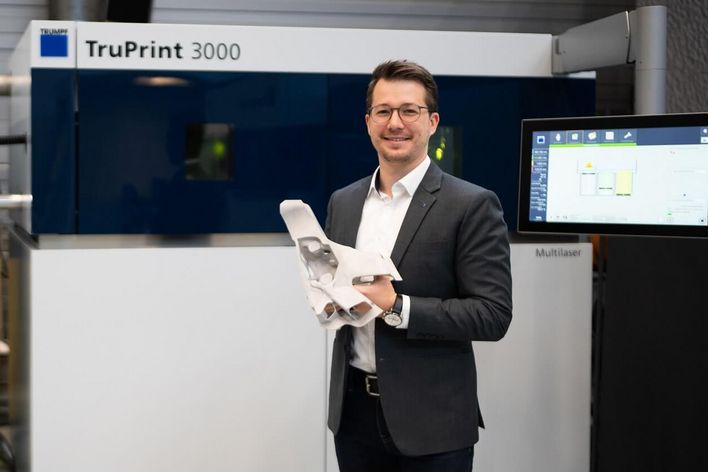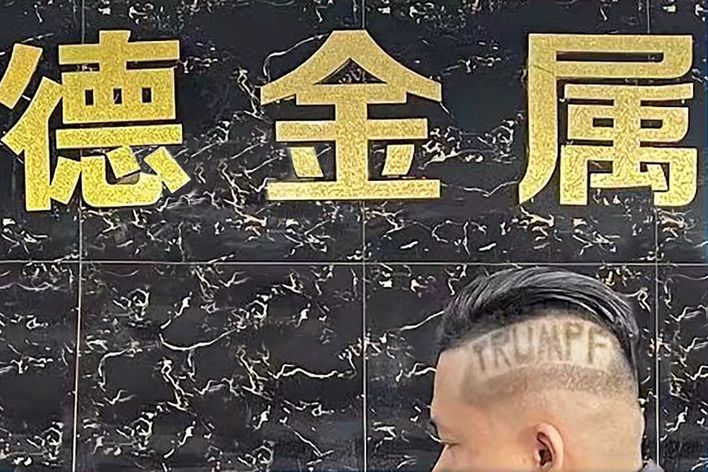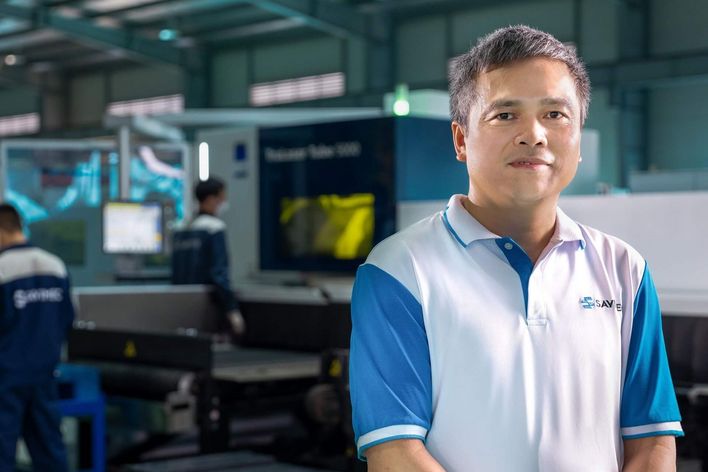Susanne Hartlieb strides purposefully across the top level of the TRUMPF parking garage. “Our employees have access to 86 electric-vehicle charging points on this level, with a total output of some 1,000 kilowatts. That’s equivalent to the energy it takes to power 10,000 televisions. Our goal is to make it easy for employees to charge their cars while they’re at work,” she says. When TRUMPF’s parking garage – with its unique undulating, slatted facade – opened in 2019, the media heralded level 8/9 as the biggest electric charging station in southern Germany.
But that was only the start: “Our field service, sales, and service teams are currently exploring which trunk sizes, ranges, and EV charging methods are the best fit for their day-to-day work. The goal is to achieve a 50-percent reduction in our vehicle fleet’s carbon emissions by 2030 as compared to fiscal 2018/2019,” says Hartlieb. She emphasizes that this will be another important step toward climate neutrality, which TRUMPF first achieved on its balance sheet in 2020.
Strategy to eliminate carbon emissions
TRUMPF will invest 80 million euros over the next seven years in reducing its climate footprint. Instead of continuing to rely on the carbon offset certificates that are so common in the industry, the high-tech company is determined to drive its emissions as low as possible. But how realistic is it for a company with some 17,000 employees to reduce carbon emissions from energy use by more than half? These emission-reduction targets have already been certified by the internationally recognized Science Based Target initiative (SBTi), a collaboration between the UN, WWF and businesses. “They’re certainly ambitious, so that’s all the more reason for TRUMPF to step up to the plate! We’ve set demanding targets to reduce our products’ energy use. And shrinking the carbon footprint of the materials we use will be equally challenging,” says Hartlieb. But she notes that project teams throughout the company have already come up with ideas and drawn up binding roadmaps. “Sustainability is a major project that requires everyone’s contributions and involvement,” she says. Fortunately, she adds, people’s willingness to tackle sustainability issues is at an all-time high.
Energy master plan
Our next stop after the parking garage is production area 4, where Susanne Hartlieb shows us the three brand-new production halls with their offices, technical areas and warehouse facilities. This new site covers 45,000 square meters, or more than six soccer pitches, and it will soon be home to a more environmentally friendly incarnation of the company’s laser division. “These kinds of projects require an energy master plan right from the start. For example, the engineers configure the flows of heat and cold to create an optimized network. Everything is aimed at saving energy, from process cooling on the shop floor to intelligent building services and energy monitoring,” says Hartlieb, as we head down a flight of stairs.
Two floors below street level, she opens a door to show us a basement full of ducts, pipes, and generators. This is the beating heart of the new facilities, brimming with heating, ventilation, and air-conditioning technology. “This could be the blueprint for all our other locations. For example, we use a centralised refrigeration system and harness its waste heat to heat up the cleaning system for laser components.” Measures like this reduce the amount of energy that TRUMPF uses for heating and cooling applications by around 70 percent. That, in turn, saves around 4,500 metric tons of carbon emissions a year – not to mention the cost savings.
More growth, fewer emissions
TRUMPF’s headquarters in Ditzingen account for a good half of its energy consumption. Using fiscal 2018/19 as a benchmark, the company aims to steadily reduce its energy consumption year by year between now and 2030. The planned measures will lead to a 1.5-percent drop in electricity use and a three-percent drop in natural gas and heating oil consumption. “We’re improving the energy efficiency of the buildings, systems, and processes at all our locations,” says Hartlieb. And those efforts look set to pay off: five years ago, TRUMPF’s locations were emitting a good 50,000 metric tons of carbon a year, but the company is now hoping to half this figure by 2030.
Energy from the rooftops
This is one reason why TRUMPF has spent years expanding its in-house generation of renewable energy. Hartlieb points to the roof: “As you would expect, our new production halls in Ditzingen have solar panels on the rooftops. We’re talking about 9,500 square meters of solar panels in production area 4 alone, which is almost as big as 1.5 soccer pitches. The PV plant supplies 1.15 gigawatt-hours of electricity a year. That’s equivalent to the energy requirements of more than 280 four-person households over the course of an entire year,” says Hartlieb. By 2027, the company intends to install solar panels on every suitable rooftop of the buildings it owns. This will produce an output of between 15 and 18 megawatt-peak (MWp) – some ten percent of the company’s total energy use. The rest will come from renewable sources. TRUMPF already purchases green power from the newest unsubsidized plants available. In future, it also hopes to buy energy directly from wind-farm operators.
A smart factory is a green factory
Hartlieb’s tour has now brought us to TRUMPF’s smart factory, where the company uses its own machines to fabricate sheet-metal parts for in-house use, for example in the housings for its bending machines. Standing next to a laser-cutting machine, Hartlieb tells us about nanojoints, Drop and Cut, Active Speed Control, TwinLine, and a whole host of other technical features that will save energy and materials. “TRUMPF already has a lot of technologies that are designed to save materials and energy and to help minimize a factory’s environmental footprint. The key to improving sustainability is to make data transparent. For example, digital connectivity opens the door to predictive maintenance and helps to avoid downtime. We help customers boost productivity and protect the environment,” she says.
Leaving a legacy
“We have to rise to this challenge,” she says emphatically. “Humanity has a limited window of opportunity between now and 2030, so we need to act now. Ultimately, we have to ask ourselves what legacy we want to leave for future generations.” And, with that parting thought, she unlocks her bike, bids us farewell, and heads home.

